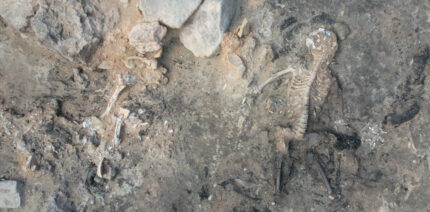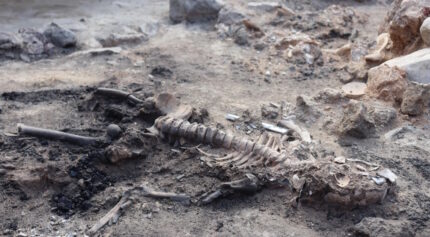
The archaeological team was excavating a mudbrick and wood structure from the era of the attack, identified by a large fire layer. Within the layer, they found the skeletal remains of two men, one younger (aged 15-18), one older (aged 40-45) under the rubble of the house. The older man had been trapped in the middle of the room, pinned by a wooden shelf and dozens of earthenware pots that collapsed on him when the building fell. The young man was at the door, perhaps trying to escape, when he was crushed by collapsed rubble.

In the presentation prepared by the excavation director, Prof. Dr. Erkan Fidan, who is also the Department Head of Archaeology at Bilecik Şeyh Edebali University, and the deputy director of the excavation, Dr. Nihan Naiboğlu, who is an Assistant Professor at Nişantaşı University, it was stated that Tavşanlı Mound, with its 8,000-year history, is the oldest settlement in Kütahya and one of the largest Bronze Age settlements in Western Anatolia, covering an area of 45 hectares. It was also mentioned that Tavşanlı Mound was likely the capital of the region….
The attack on the settlement was very sudden and it seems like the northeastern edge was particularly vulnerable to attack. All of the weapons — daggers, spearheads, arrows — found there are in the destruction layer. Archaeologists believe the settlement was besieged by a greater military power and the entire city was burned to the ground.
This excavation project began in 2021 and is planned to continue for at least 30 years. The team hopes to discover who attacked the city and why in future dig seasons.
* This article was originally published here






No comments:
Post a Comment